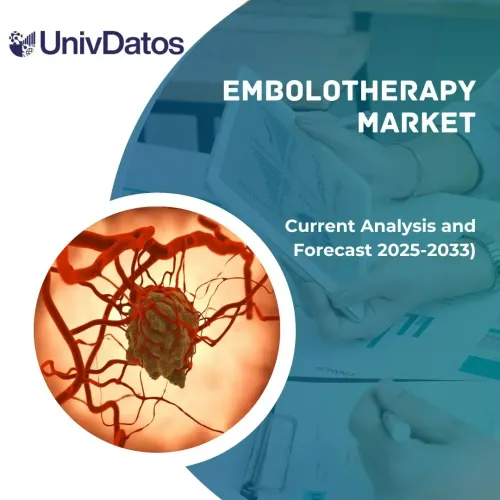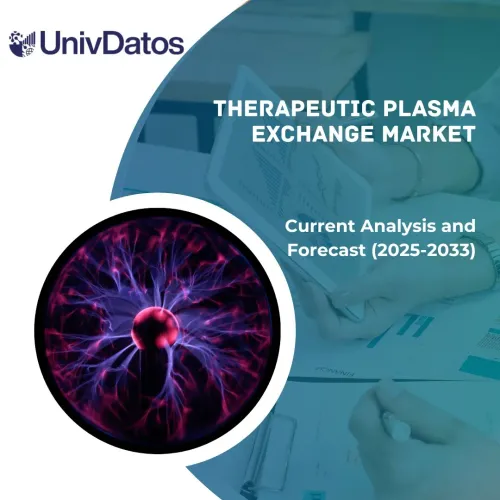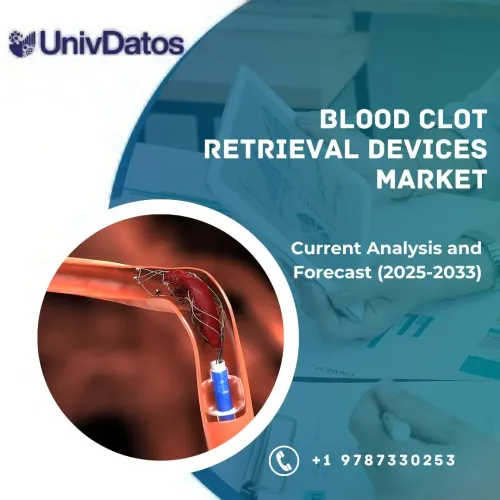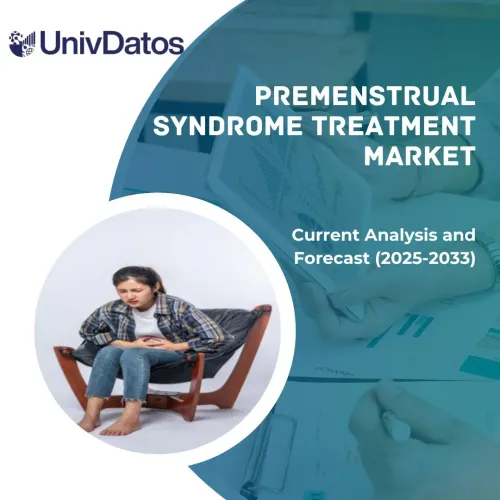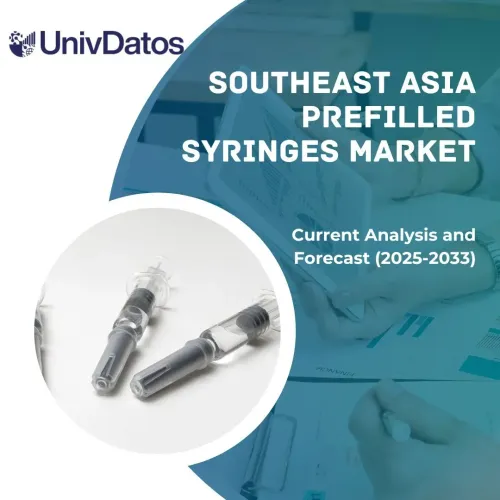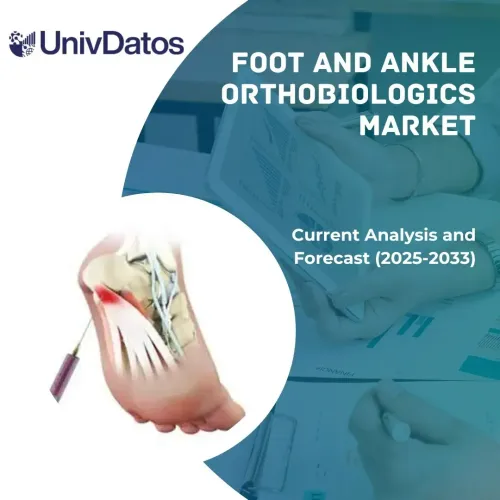- Home
- Chi siamo
- Settore
- Servizi
- Lettura
- Contattaci
Mercato dei farmaci per la fibrillazione atriale: Analisi attuale e previsioni (2021-2027)
Prodotto in evidenza (Farmaci anticoagulanti e antiaritmici); Tipo (Fibrillazione atriale parossistica, Fibrillazione atriale persistente e Fibrillazione atriale persistente di lunga durata); Utenti finali (Ospedali, Centri chirurgici ambulatoriali e Altri); e Regione/Paese
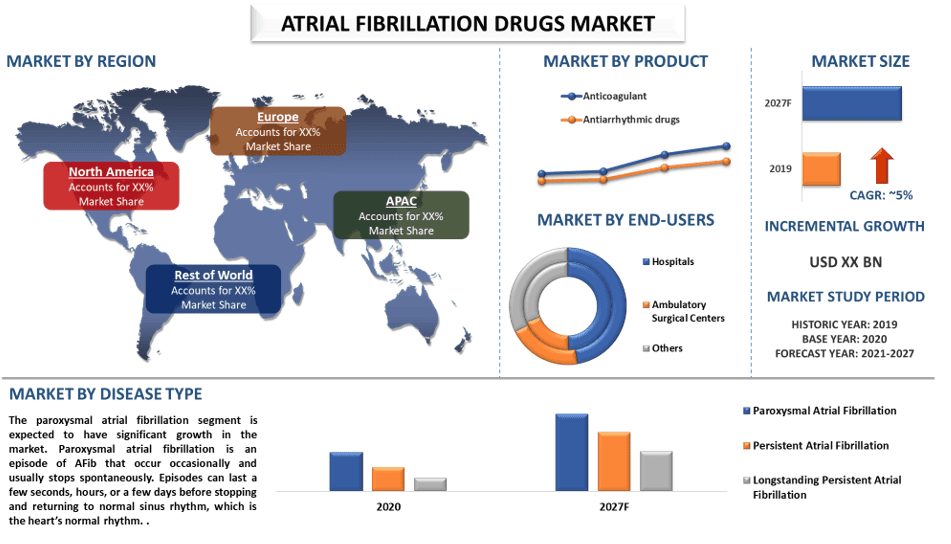
Il mercato dei farmaci per la fibrillazione atriale ha catturato una domanda di mercato significativa e si prevede che crescerà a un CAGR del 5% durante il periodo di previsione. La fibrillazione atriale (FA) è un ritmo cardiaco irregolare, noto anche come un tipo di aritmia. Può interrompere il normale flusso di sangue nel corpo e aumentare il rischio di coaguli di sangue e ictus. Il numero in rapido aumento di casi di fibrillazione atriale è uno dei motivi principali della crescita del mercato dei farmaci per la fibrillazione atriale. Ad esempio, secondo il CDC, si stima che 12,1 milioni di persone negli Stati Uniti avranno la FA nel 2030. Nel 2019, la FA ha rappresentato 26.535 decessi. Inoltre, il numero crescente di interventi chirurgici e la crescente prevalenza di uno stile di vita stressante sono anche responsabili dei casi di aritmia, con conseguente crescita significativa del mercato dei farmaci per la fibrillazione atriale. Inoltre, secondo il CDC, l'ipertensione, il fumo e il consumo di alcol sono i fattori che possono causare la fibrillazione atriale.
Il COVID-19 ha un effetto sconvolgente sul mercato globale. Tuttavia, il mercato dei farmaci per la fibrillazione atriale non è stato ampiamente influenzato dalla pandemia. Ciò è dovuto principalmente alla pandemia di COVID-19, il governo ha imposto rigide normative sulle istituzioni sanitarie e sono stati consentiti trattamenti essenziali. Le malattie cardiache rientrano nell'assistenza essenziale e il mercato delle malattie cardiache non è stato influenzato dalla pandemia.
Pfizer Inc., AstraZeneca Plc, Boehringer Ingelheim International GmbH, Sanofi S.A., Bristol-Myers Squibb Company, Mitsubishi Tanabe Pharma Corporation, Johnson and Johnson, DAIICHI SANKYO COMPANY LIMITED, GlaxoSmithKline plc e Portola Pharmaceuticals sono alcuni dei principali operatori del mercato. Questi operatori hanno adottato diverse misure strategiche per fornire ai clienti prodotti/tecnologie hi-tech e innovativi.
Approfondimenti presentati nel rapporto
"Tra i prodotti, si prevede che la categoria dei farmaci anticoagulanti assisterà a una crescita considerevole durante il periodo di previsione"
In base al prodotto, il mercato è stato suddiviso in farmaci anticoagulanti e antiaritmici. Tra questi, si prevede che i farmaci anticoagulanti avranno una crescita significativa nel mercato dei farmaci per la fibrillazione atriale. La facilità di disponibilità ed efficacia contribuisce in modo significativo alla crescita del mercato del segmento. Inoltre, la disponibilità di nuovi farmaci nella categoria dei farmaci anticoagulanti per la prevenzione degli ictus ha mostrato risultati impressionanti e ha anche un impatto positivo sulla crescita segmentale dei farmaci anticoagulanti.
"Tra i tipi di malattia, la categoria della fibrillazione atriale parossistica deteneva una quota significativa nel 2020"
In base al tipo di malattia, il mercato è stato suddiviso in fibrillazione atriale parossistica, fibrillazione atriale persistente e fibrillazione atriale persistente di lunga data. Tra questi, si prevede che la categoria della fibrillazione atriale parossistica assisterà a una crescita significativa durante il periodo di previsione. Ciò è dovuto principalmente alla maggiore prevalenza della fibrillazione atriale parossistica (PAF) e ai cambiamenti nelle preferenze di stile di vita. Ad esempio, secondo la ricerca condotta da NCBI, la prevalenza di PAF riscontrata in una popolazione indirizzata per il monitoraggio elettrocardiografico continuo di 24 ore per diversi motivi era del 2,5% e la prevalenza complessiva di FA/AFL era del 12,4%. La PAF era più diffusa nei pazienti più giovani.
"Tra gli utenti finali, gli ospedali guideranno la crescita nel mercato globale dei farmaci per la fibrillazione atriale"
In base agli utenti finali, il mercato è segmentato in ospedali, centri chirurgici ambulatoriali e altri. Si prevede che gli ospedali avranno una crescita considerevole del mercato durante il periodo di previsione. Ciò è dovuto alla specializzazione degli ospedali in molteplici trattamenti di malattie e alla presenza di professionisti qualificati. Inoltre, i crescenti investimenti delle nazioni in via di sviluppo negli ospedali contribuiscono in modo significativo alla crescita segmentale nel mercato dei farmaci per la fibrillazione atriale. Ad esempio, il governo indiano aveva stanziato 2.673,9 milioni di dollari per i 16 nuovi AIIMS.
"Si prevede che il Nord America assisterà a una crescita significativa durante il periodo di previsione"
Il Nord America ha conquistato una quota di mercato significativa del mercato globale dei farmaci per la fibrillazione atriale nel 2020. Si prevede che crescerà con un CAGR considerevole durante il periodo di previsione (2021-2027F). I fattori principali come la presenza di infrastrutture sanitarie e la crescente popolazione geriatrica hanno contribuito alla crescita della regione nel mercato dei farmaci per la fibrillazione atriale. Inoltre, l'assicurazione sanitaria più elevata è anche responsabile dell'aumento del numero di interventi chirurgici che si traduce nella crescente domanda di farmaci nella regione. Secondo il censimento degli Stati Uniti, il 91,4% dei cittadini statunitensi era coperto da un'assicurazione sanitaria nel 2020.
Motivi per acquistare questo rapporto:
- Lo studio include l'analisi della dimensione del mercato e delle previsioni convalidate da esperti chiave del settore autenticati.
- Il rapporto presenta una rapida rassegna delle prestazioni complessive del settore a colpo d'occhio.
- Il rapporto copre un'analisi approfondita dei principali colleghi del settore con un focus primario sulle principali informazioni finanziarie aziendali, sul portafoglio prodotti, sulle strategie di espansione e sugli sviluppi recenti.
- Esame dettagliato di driver, vincoli, tendenze chiave e opportunità prevalenti nel settore.
- Lo studio copre in modo completo il mercato attraverso diversi segmenti.
- Analisi approfondita a livello regionale del settore.
Opzioni di personalizzazione:
Il mercato globale dei farmaci per la fibrillazione atriale può essere ulteriormente personalizzato in base alle esigenze o a qualsiasi altro segmento di mercato. Inoltre, UMI comprende che potresti avere le tue esigenze aziendali, quindi sentiti libero di metterti in contatto con noi per ottenere un rapporto che si adatti completamente alle tue esigenze.
Indice
Metodologia di ricerca per l'analisi del mercato globale dei farmaci per la fibrillazione atriale (2021-2027)
L'analisi del mercato storico, la stima del mercato attuale e la previsione del mercato futuro del mercato globale dei farmaci per la fibrillazione atriale sono stati i tre passaggi principali intrapresi per creare e analizzare l'adozione di farmaci per la fibrillazione atriale nelle principali regioni a livello globale. È stata condotta un'esaustiva ricerca secondaria per raccogliere i dati storici del mercato e stimare le dimensioni attuali del mercato. In secondo luogo, per convalidare queste informazioni, sono stati presi in considerazione numerosi risultati e ipotesi. Inoltre, sono state condotte anche esaurienti interviste primarie con esperti del settore lungo tutta la catena del valore del mercato globale dei farmaci per la fibrillazione atriale. Dopo l'assunzione e la convalida dei dati di mercato attraverso interviste primarie, abbiamo impiegato un approccio top-down/bottom-up per prevedere le dimensioni complete del mercato. Successivamente, sono stati adottati metodi di scomposizione del mercato e triangolazione dei dati per stimare e analizzare le dimensioni del mercato dei segmenti e sottosegmenti del settore di appartenenza. La metodologia dettagliata è spiegata di seguito:
Analisi delle dimensioni storiche del mercato
Fase 1: Studio approfondito delle fonti secondarie:
È stato condotto uno studio secondario dettagliato per ottenere le dimensioni storiche del mercato dei farmaci per la fibrillazione atriale attraverso fonti interne aziendali come relazioni annuali e bilanci, presentazioni di performance, comunicati stampa, ecc., e fonti esterne tra cui riviste, notizie e articoli, pubblicazioni governative, pubblicazioni della concorrenza, rapporti di settore, database di terze parti e altre pubblicazioni credibili.
Fase 2: Segmentazione del mercato:
Dopo aver ottenuto le dimensioni storiche del mercato dei farmaci per la fibrillazione atriale, abbiamo condotto un'analisi secondaria dettagliata per raccogliere informazioni storiche sul mercato e quote per diversi segmenti e sottosegmenti per le principali regioni. I principali segmenti inclusi nel rapporto sono prodotto, tipo di malattia e utenti finali. Ulteriori analisi a livello di paese sono state condotte per valutare l'adozione complessiva dei modelli di test in quella regione.
Fase 3: Analisi dei fattori:
Dopo aver acquisito le dimensioni storiche del mercato dei diversi segmenti e sottosegmenti, abbiamo condotto una analisi dei fattori dettagliata per stimare le dimensioni attuali del mercato dei farmaci per la fibrillazione atriale. Inoltre, abbiamo condotto un'analisi dei fattori utilizzando variabili dipendenti e indipendenti come prodotto, tipo di malattia e utenti finali delle apparecchiature per farmaci per la fibrillazione atriale. È stata condotta un'analisi approfondita per scenari di domanda e offerta considerando le principali partnership, fusioni e acquisizioni, espansione aziendale e lanci di prodotti nel settore del mercato dei farmaci per la fibrillazione atriale in tutto il mondo.
Stima e previsione delle dimensioni attuali del mercato
Dimensionamento attuale del mercato: Sulla base di informazioni utili provenienti dalle 3 fasi precedenti, siamo giunti alle dimensioni attuali del mercato, ai principali attori nel mercato globale dei farmaci per la fibrillazione atriale e alle quote di mercato dei segmenti. Tutte le quote percentuali richieste e le ripartizioni del mercato sono state determinate utilizzando l'approccio secondario sopra menzionato e sono state verificate attraverso interviste primarie.
Stima e previsione: Per la stima e la previsione del mercato, sono stati assegnati pesi diversi a fattori diversi, tra cui driver e tendenze, vincoli e opportunità disponibili per le parti interessate. Dopo aver analizzato questi fattori, sono state applicate tecniche di previsione pertinenti, ovvero l'approccio top-down/bottom-up, per giungere alla previsione di mercato per il 2027 circa per diversi segmenti e sottosegmenti nei principali mercati a livello globale. La metodologia di ricerca adottata per stimare le dimensioni del mercato comprende:
- Le dimensioni del mercato del settore, in termini di entrate (USD) e il tasso di adozione del mercato dei farmaci per la fibrillazione atriale nei principali mercati a livello nazionale
- Tutte le quote percentuali, le suddivisioni e le ripartizioni dei segmenti e sottosegmenti di mercato
- I principali attori nel mercato globale dei farmaci per la fibrillazione atriale in termini di soluzioni offerte. Inoltre, le strategie di crescita adottate da questi attori per competere nel mercato in rapida crescita
Convalida delle dimensioni e della quota di mercato
Ricerca primaria: Sono state condotte interviste approfondite con i Key Opinion Leaders (KOL) tra cui dirigenti di alto livello (CXO/VP, responsabile vendite, responsabile marketing, responsabile operativo, responsabile regionale, responsabile paese, ecc.) nelle principali regioni. I risultati della ricerca primaria sono stati quindi riepilogati ed è stata eseguita un'analisi statistica per dimostrare l'ipotesi dichiarata. Gli input della ricerca primaria sono stati consolidati con i risultati secondari, trasformando quindi le informazioni in informazioni utili.
Suddivisione dei partecipanti primari nelle diverse regioni
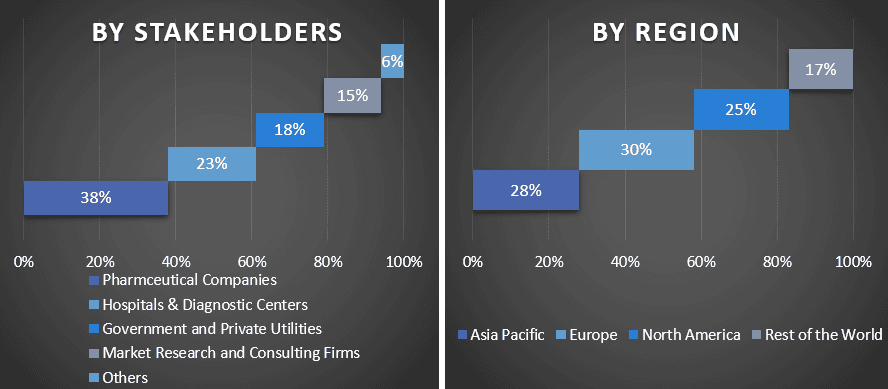
Ingegneria del mercato
È stata impiegata la tecnica di triangolazione dei dati per completare la stima complessiva del mercato e per giungere a dati statistici precisi di ciascun segmento e sottosegmento del mercato globale dei farmaci per la fibrillazione atriale. I dati sono stati suddivisi in diversi segmenti e sottosegmenti dopo aver studiato vari parametri e tendenze nelle aree di prodotto, tipo di malattia e utenti finali nel mercato globale dei farmaci per la fibrillazione atriale.
L'obiettivo principale dello studio sul mercato globale dei farmaci per la fibrillazione atriale
Le tendenze attuali e future del mercato globale dei farmaci per la fibrillazione atriale sono state individuate nello studio. Gli investitori possono ottenere informazioni strategiche per basare la loro discrezione per gli investimenti dall'analisi qualitativa e quantitativa eseguita nello studio. Le tendenze attuali e future del mercato hanno determinato l'attrattiva complessiva del mercato a livello regionale, fornendo una piattaforma per il partecipante industriale per sfruttare il mercato non sfruttato a vantaggio di un vantaggio di first-mover. Altri obiettivi quantitativi degli studi includono:
- Analizzare le dimensioni attuali e previste del mercato dei farmaci per la fibrillazione atriale in termini di valore (USD). Inoltre, analizzare le dimensioni attuali e previste del mercato di diversi segmenti e sottosegmenti
- I segmenti nello studio includono aree di prodotto, tipo di malattia e utenti finali.
- Definire e analizzare il quadro normativo per l'industria del mercato dei farmaci per la fibrillazione atriale.
- Analizzare la catena del valore coinvolta con la presenza di vari intermediari, insieme all'analisi dei comportamenti dei clienti e dei concorrenti del settore.
- Analizzare le dimensioni attuali e previste del mercato dei farmaci per la fibrillazione atriale per la regione principale.
- I principali paesi delle regioni studiati nel rapporto includono Asia Pacifico, Europa, Nord America e Resto del mondo.
- Profili aziendali del mercato dei farmaci per la fibrillazione atriale e le strategie di crescita adottate dagli attori del mercato per sostenersi nel mercato in rapida crescita
- Analisi approfondita a livello regionale del settore
Correlati Report
I clienti che hanno acquistato questo articolo hanno acquistato anche



